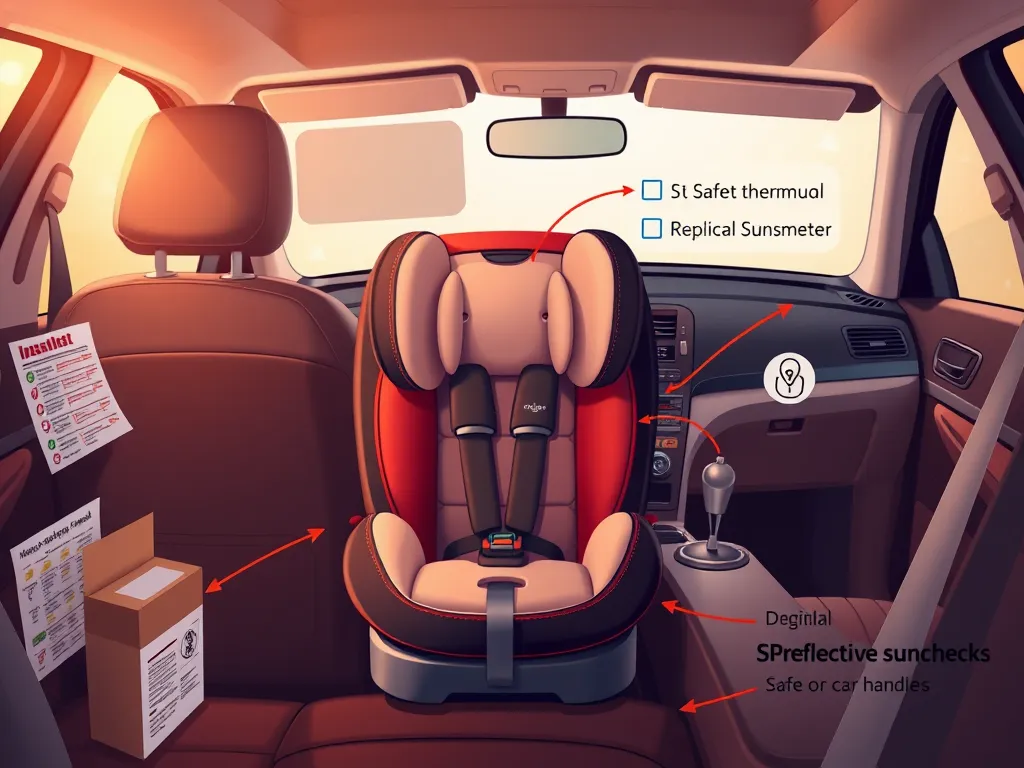Essential Best Car Seat Safety Checks for Parents

Best Car Seat Safety Checks
Ensuring the safety of your child while traveling begins with the proper use of their car seat. The implementation of the Best Car Seat Safety Checks is paramount for every caregiver. This method involves thorough evaluations and adjustments to guarantee the car seat acts as an effective barrier during potential accidents, thereby reducing the severity of injuries. In this piece, we will examine various checks that will help maintain practices that prioritize your child's safety.
The Best Car Seat Safety Checks not only provide peace of mind for parents but are also critical for complying with local laws and regulations. These checks involve assessments of the car seat’s installation, its harness system, vehicle compatibility, adherence to safety standards, and awareness of common mistakes to avoid. By understanding how to conduct these checks effectively, caregivers can ensure the most secure and protective environment for their children while on the road.
Regularly conducting the Best Car Seat Safety Checks can lead to significant improvements in a child's safety during car travel. With incidents of vehicular accidents sadly common, the importance of preparing for such scenarios can never be overstated. By prioritizing these checks and addressing any issues promptly, parents can significantly reduce the risks associated with improper car seat usage. Continuous education on car seat safety is also advised, as new information and regulations are often released.
This article aims to be a comprehensive guide to conducting the Best Car Seat Safety Checks efficiently. From steering clarity on installation to navigating compliance with safety regulations, we will explore each aspect systematically. Furthermore, understanding what mistakes frequently happen when dealing with car seats will empower parents and guardians to avoid potential pitfalls. Therefore, let us delve deeper into how best to ensure a car seat provides optimal safety.
Overall, being proactive and diligent in performing the Best Car Seat Safety Checks can widely contribute to a child's well-being in the family vehicle. Consideration of factors such as installation accuracy, adherence to specific harness requirements, and maintaining awareness of vehicle compatibility, alongside the regular updates regarding standards and regulations, will enhance a child's safety. Now, we will look at detailed areas of focus in each check, starting with installation checks.
Installation Checks
Correct positioning of the car seat is a vital aspect of installation checks. The car seat should be placed in the back seat of the vehicle, ideally in the middle position if there is a seatbelt and enough space. The seat should not move more than an inch side to side or front to back once installed; achieving this level of stability indicates that the car seat is secure and correctly positioned.
Tightness verification of straps also plays an important role in installation checks. It is essential that the straps of the car seat are securely tightened to keep your child firmly in place. Parents can check the tightness by attempting to pinch the harness strap in between their fingers – if the strap can easily be pinched, it is too loose, and adjustments are necessary to ensure maximum safety.
Ensuring your child’s safety on the road begins with understanding the Best Car Seat Safety Checks for your vehicle.
Angle adjustments for safety should be performed to accommodate the child's size and weight. An angled installation helps prevent the child from slumping forward during potential collisions. Different car seats come with specific indicators or guidelines to inform parents about the appropriate angle when installing the seat. Ensuring the proper angle enhances protection and provides peace of mind.
Harness System Evaluation
Proper harness slot selection is essential in harness system evaluation. The slot must be positioned at or below the child's shoulders for rear-facing car seats and at or above the shoulders for forward-facing seats. Incorrect placement can lead to ineffective restraint during an accident, increasing the risk of injury to the child.
Strap tightness and placement should be thoroughly checked during harness evaluations. The straps should lie flat against the child's body and fit snugly without causing discomfort. A good rule of thumb is that a parent should be able to fit only one finger between the strap and the child's collarbone, indicating it is tight enough without causing harm.
Regular checks for wear and tear on the harness are also advisable to ensure optimal safety. Over time, car seat straps can fray or stretch, decreasing their effectiveness. Regularly inspect the harness for any visible damage and follow the manufacturer's instructions on how often to replace or upgrade the seat itself to ensure safety compliance.
Vehicle Compatibility
Testing seat fit in various vehicles is crucial, as not all car seats fit all vehicles uniformly. It's advisable to try out the car seat in the vehicle where it will be used most frequently to ensure a proper fit. If you plan to transfer the seat to another vehicle, make sure that the fit remains secure and satisfactory in that vehicle as well.
Understanding LATCH system requirements is another essential component of vehicle compatibility checks. The LATCH (Lower Anchors and Tethers for Children) system provides dedicated anchors for securing car seats without the use of seat belts. Consult your car's manual for details about LATCH placements and weight limits to ensure safe usage.
Consulting car manuals for safety is often overlooked, yet it is a vital step in understanding how to install car seats properly. Various vehicles may have special requirements or recommendations regarding car seat installation, and referencing this information can guide parents in achieving the safest setup.
Safety Standards and Regulations
Understanding safety ratings is essential for choosing the best car seat for your child. Most car seats are tested for compliance with safety standards, and they receive a rating indicating their effectiveness. Parents should look for seats that meet or exceed national safety standards to ensure maximum protection for their children.
Keeping up with new regulations is another crucial aspect of car seat safety. Laws and recommendations regarding child passenger safety may change periodically, so parents must remain informed about the latest safe practices according to their region.
What to look for in a car seat manual is vital information that can often be overlooked. The manual will typically provide installation guidelines, safety ratings, and maintenance tips, which are crucial for guaranteeing safe usage, thus ensuring parents entirely grasp the scope of their car seat's safety and proper management.
Common Mistakes to Avoid
Improper angle of installation is a common mistake that many caregivers may overlook. Forgetting to set the car seat at the correct angle can place a child at a higher risk of injury in the event of a crash.
Wrong harnessing techniques are another typical error. Mismanaging the harness system can lead to ineffective child restraint during accidents. It’s necessary to follow proper guidelines for securing belts and strapping children into the seat.
Forgetting to register the car seat is also a mistake that can have serious implications. Registration ensures that parents receive notifications about product recalls and safety notices that might affect their specific model.
